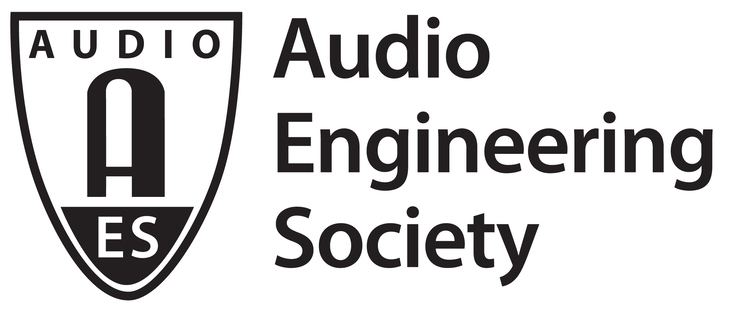Formation 1948 Website aes.org | Membership 14215 | |
 | ||
Headquarters New York City, New York, United States Founded 17 February 1948, New York City, New York, United States Similar National Association of Broadc, Berklee College of Music, American Society of Compose, Belmont University, Institute of Electrical and Elect Profiles | ||
Aes audio engineering society lecture audio metering techniques and new challenges
Established in 1948, the Audio Engineering Society (AES) draws its membership from engineers, scientists, other individuals with an interest or involvement in the professional audio industry. The membership largely comprises engineers developing devices or products for audio, and persons working in audio content production. It also includes acousticians, audiologists, academics, and those in other disciplines related to audio. The AES is the only worldwide professional society devoted exclusively to audio technology.
Contents
- Aes audio engineering society lecture audio metering techniques and new challenges
- History
- Membership
- Journal
- Technical Council
- Standards
- Gold Medal recipients
- British section
- Connection with the VDT
- References
The Society develops, reviews and publishes engineering standards for the audio and related media industries, and produces the AES Conventions, which are held twice a year alternating between Europe and the US. The AES and individual regional or national "Sections" also hold AES Conferences on different topics during the year.
History
The idea of a society dedicated solely to audio engineering had been discussed for some time before the first meeting, but was first proposed in print in a letter by Frank E. Sherry, of Victoria, Texas, in the December 1947 issue of the magazine Audio Engineering. A New York engineer and audio consultant, C.J. LeBel, then published a letter agreeing, and saying that a group of audio professionals had already been discussing such a thing, and that they were interested in holding an organizational meeting. He asked interested persons to contact him for details. The response was enthusiastic and encouraging. Fellow engineer Norman C. Pickering published the date for an organizational meeting, and announced the appointment of LeBel as acting chairman, and himself as acting secretary.
The organizational meeting was held at the RCA Victor Studios in New York City on February 17, 1948. Acting chairman Mr. LeBel spoke first, emphasizing the professional, non-commercial, independent nature of the proposed organization. Acting Secretary Norman Pickering then discussed the need for a professional organization that could foster an exchange of knowledge in this quickly-growing field. The group agreed to form the Audio Engineering Society, and confirmed the acting executive committee, which consisted of John D. Colvin, C. J. LeBel, C. G. McProud, Norman C. Pickering and Chester O. Rackey.
The first AES technical membership meeting followed on March 11, with about 3500 attendees. The guest speaker at the first meeting was Harry F. Olson, a prominent engineer and scientist at RCA and author of Acoustical Engineering, who spoke on Problems of High-Fidelity Reproduction.
Membership
From its New York beginnings, the AES has grown worldwide and as of October 31, 2010 had 14215 members, 4306 of whom are classified as students. Members elect a Board of Governors and officers, who jointly set policy and procedures for the Society. The AES is a tax-exempt, 501(c)(3) non-profit corporation headquartered in New York.
Journal
The AES publishes a peer-reviewed journal, the Journal of the Audio Engineering Society (JAES).
Technical Council
23 Technical Committees advise the AES Technical Council on emerging trends and areas of interest in the audio engineering community. The Committee meetings, held at Conventions, are open to participation by members and non-members alike, and are the venue for planning workshops, seminars and conferences in specific technical areas.
Standards
The AES has been involved in setting technical standards for audio since 1977. The AES Standards Committee (AESSC), through a consensus system open to anyone materially affected by such standards, develops and publishes a number of standards on the subject of analog and digital audio recording, transmission, and/or reproduction. Notable standards include:
AESSC also provides input to IEC for development and revision of international standards in audio engineering.
AES does not charge for participation in the standards process, but does charge non-members for online copies of published standards. Printed copies are available for a charge to both members and non-members.
Gold Medal recipients
The AES Gold Medal is the Society's highest honor, and given in recognition of outstanding achievements, sustained over a period of years, in the field of Audio Engineering. The award was established in 1971; it was formerly known as the John H. Potts Memorial Award.
British section
The AES British Section, which is the largest outside the US, issues a monthly newsletter and holds regular lectures, usually in London, with occasional visits to studios and other places of interest. Lectures, which are often on topics of topical interest to audio enthusiasts are usually recorded, with past lectures available to all as free MP3 downloads, sometimes with accompanying slides in PDF format.
Connection with the VDT
Although there are several German sections of the AES and there is no formal connection to the Verband Deutscher Tonmeister, the goals and activities of both organizations are closely related and there are several instances of double memberships, e.g. in the persons of Benjamin Bernfeld, Gerhard Steinke and Günther Theile.
